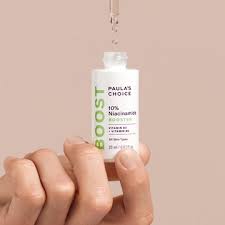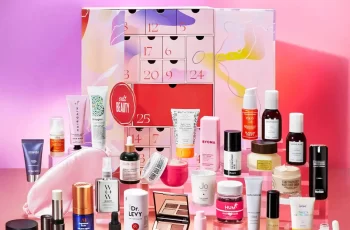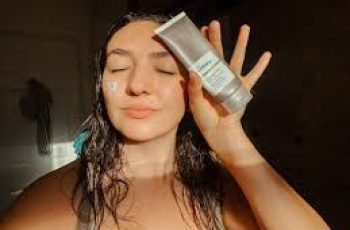Can I Use Niacinamide and Azelaic Acid at The Same Time?
When it comes to layering some ingredients, you’ll often find that some work together ensuring the skin is left looking and feeling in its healthiest state. Niacinamide and azelaic acid are two potent ingredients that work effectively on the skin targeting different areas of the skin. The question we are left with however, is how can I use niacinamide and azelaic acid at the same time?
Before we dive into finding out more, let’s quickly refresh ourselves about what these ingredients are and the benefits they deliver to the skin.
What is azelaic acid?
Derived from barley, wheat, rye, as well as naturally occurring in the yeast found in the skin.
Often mistaken as a member of the alpha hydroxy acid or beta hydroxy acid family, azelaic acid performs exfoliation to the outer layers of the skin.
Works at sloughing away the build-up of dead skin cells, dirt, debris, and other environmental aggressors that can clog the pores and lead to blackheads and other blemishes.
Rich in antibacterial properties, azelaic acid can effectively combat P.acnes, the bacteria that causes acne.
Helps to reduce inflammation meaning it is able to target rosacea and other skin inflammations, including acne and other breakouts.
Combats areas of hyperpigmentation and dark spots giving the skin an overall improved, brighter complexion.
Packed with antioxidants, azelaic acid can ward off any damage caused by the skin from exposure to free radicals, such as pollution, UV exposure and central heating.
You’ll often find the concentrates of azelaic acid vary between 15%-20% with lower percentages found in over the counter formulations.
If you wanted to learn more about azelaic acid, check out our dedicated blog post.
What is niacinamide?
Niacinamide is a form of vitamin B3 and can be naturally derived from such things as, brewer’s yeast, and cereals.
Helps to stimulate the production of collagen resulting in plumper, younger looking skin with less signs of fine line and wrinkles.
Targets signs of hyperpigmentation, sun damage, and age spots. It does this by preventing melanosome transfer inhibiting further hyperpigmentation from forming on the skin surface.
Regulates and balances the production of sebum making it an effective ingredient for those prone to acne and breakouts.
Packed with antioxidants allowing the skin to be protected from oxidised stress on the face.
Contains anti-inflammatory properties which reduce redness, blotchiness, and uneven texture on the surface of the skin.
Increases the speed of cell turnover helping the complexion to look more even and brighter.
Find out more about niacinamide by checking out our blog post.
How do you use niacinamide and azelaic acid together?
The easiest way to determine how to use niacinamide and azelaic acid together is taking into consideration the formulations the ingredients come in. By this I mean you must be mindful of the order you need to apply skincare products to gain optimal results. It’s generally considered best to start with the thinnest consistency and work your way up to the thickest.
You’ll often find that azelaic acid is popular blended into products such as toners and serums. As for niacinamide, this is usually found in serums mostly and benefits the skin with an added boost of hydration, especially after using toners containing exfoliants such as azelaic acid.
Can you mix azelaic acid with niacinamide?
Yes, you sure can! It is said that mixing niacinamide and azelaic acid together is a simple way of benefiting the skin and counteracting any potential dryness caused by the chemical exfoliant.
Due to the effectiveness of teaming both ingredients together, there is little to no side effects when layering these actives on top of one another. However, everyone’s skin is different, and it is something to remember if you find your skin becomes irritated, therefore I advised to always consult with a doctor or dermatologist to find the best formula for you and your skin needs.
Should I use azelaic acid or niacinamide first?
This boils down to the consistency of the formula the ingredients are blended in to. You’ll find that azelaic acid will often occur in products such as exfoliating toners, or face cleansers. These are applied to the skin during the beginning stages of your skincare routine. This can then be followed with a serum enriched in niacinamide which, thanks to its humectant properties, will work at drawing water into the skin from the area surrounding the face and locking it into place.
The lipid barrier of the skin needs hydration to remain strengthened and able to protect the skin from exposure to free radicals, such as pollution, UV rays, central heating, and other environmental aggressors.
What should you not mix with niacinamide?
There are several outdated studies stating how you must avoid using niacinamide with vitamin C. This is a result, as I have mentioned already, about outdated research explaining how vitamin C as a skin ingredient is too unstable. It was also thought that with niacinamide and vitamin C both containing high amounts of antioxidants will counteract each other making each of these potent powerhouses useless.
Having said that, there have been incredible improvements within the beauty industry with more recent formulations containing stable versions of vitamin C. You will also find that with some brands and their formulas will include an effective blend of both niacinamide and vitamin C.
When should azelaic acid be used in routine?
You can use azelaic acid twice a day in your routine once you have built a tolerance to the acid. Depending on the formula containing azelaic acid will determine when you use it in your routine. As I have previously mentioned, the thicker the consistency the later in your routine it should be applied. The reason for this is to ensure you avoid creating a physical barrier on the skin preventing the other actives from penetrating the skin.
Luckily for many of us azelaic acid is suitable for all skin types and should be an easy ingredient to include into your routine. If you have some concerns however, you can always perform a patch test on the skin for 24 hours before applying it all over the face. This will avoid any unwanted side effects and help you find the best products to use in your daily routine.
There you have it; I hope I have answered any questions you had with using niacinamide and azelaic acid at the same time. Don’t hesitate to come and find me on Instagram if you had any further questions.
DQH Knowledge drop: In your 20s, your skin cell turnover decreases. (Cell turnover is a key component in keeping your skin youthful.) You know what else slows down? Your collagen production. Starting in your 20s, collagen decreases by about 1 percent per year. Should you want to prevent fine lines and wrinkles, start by eliminating behaviors that contribute to premature aging. “If it’s bad for you, it’s bad for your skin,” says dermatologist Michel Somenek.
“Cigarette smoking reduces blood flow to the skin and causes premature wrinkling and a dull skin texture. Making the repeated pursed motion to inhale can also cause smoker’s lines. Alcohol and recreational drugs are toxins for the skin that damage its cellular structure and DNA,” Somenek tells us. “The faster you eliminate vices while you are young, the better chance your skin and body have to recuperate.” Also, adopting an anti-aging routine in your 20s is key. After all, the best offense is a good defense. We spoke to Somenek and experts Joshua Ross and Audrey Kunin to find out more.
Keep reading for the best anti-aging products for your 20s, according to skincare professionals.
Sunscreen
“We all know that the sun is the number one cause of skin aging and starting the prevention in your 20s is very important,” Ross says. “The majority of your sun damage won’t start to appear until you’re in your 30s, so don’t wait until you see it surface or you’ll be behind the curve. Stay ahead of it with a good-quality zinc-based sunscreen worn daily.”
Farmacy Green Defense Daily Mineral Sunscreen
An invisible sunscreen with SPF 30, plus botanical extracts meant to protect skin with tons of antioxidants. Bonus: It’s clean and fine to use under makeup.
Bareminerals Complexion Rescue™ Tinted Moisturizer Broad Spectrum SPF 30
Although we recommend you use your SPF and moisturizer separately, we also understand moments when you don’t have time or energy for that extra step. For those times, this bareMinerals moisturizer is a great thing to have on hand.
Vitamin C Serum
“A great introduction to anti-aging is to start with a vitamin C serum in your morning skincare routine,” Ross says. “It’s a powerful antioxidant that will neutralize free radicals and brighten the skin.” He adds that it’s a great way to counteract the effects of the sun’s harmful rays, which, as previously mentioned, are among the biggest causes of premature aging.
Drunk Elephant C-Firma™ Vitamin C Day Serum
The Drunk Elephant C-Firma is a lightweight serum that promises to give skin a glow by combining the brightening powers of vitamin C with ferulic acid, l-ascorbic acid, and vitamin E. The included sodium hyaluronate is meant to replace hydration loss, so you shouldn’t have to deal with any irritation.
Sunday Riley C.E.O. Rapid Flash Brightening Serum
This potent serum is jam-packed with vitamin C (15 percent, to be exact), which means it’s a potential superstar at both brightening skin and dousing it in antioxidants.
Peptides
Using peptides on your skin has many benefits, says Somenek. “The skin barrier is what defends the body against pollution, UV rays, bacteria, and toxins. It can be damaged by several everyday factors. Using topical peptides aids in building a stronger barrier,” he says. “Peptides comprise elastic fibers, which are a type of protein. These fibers help to make skin appear taut and firm. Peptides can also help repair damaged skin, relieve inflammation, and even out skin tone. Some peptides can kill acne-causing bacteria that is common in 20-somethings.”
Kunin agrees, saying, “Peptides are an excellent entry point for supporting collagen.” She recommends looking for face and eye treatments that contain these collagen-boosting powerhouses.
Charlotte Tilbury Magic Eye Rescue Cream
This Charlotte Tilbury super-emollient eye cream has a base of coconut oil and shea butter (read: it’s incredibly hydrating). Botanicals plus peptides are meant to help reduce dark circles and boost collagen, respectively.
This creamy moisturizer serves up potent collagen-boosting peptides and pycnogenol, and antioxidant-rich vitamin C. “Instead of sitting on top of the skin, peptides penetrate the outer layer so they go deep. The ‘signals’ they send tell the cells to produce elastin and collagen, which are needed for youthful-looking skin,” explains Somenek.
At-Home Peel Pads
Remember that skin cell turnover fiasco we talked about earlier? One way to help support it is by exfoliating. “Exfoliation is important to help keep skin fresh and luminous,” Kunin says. She recommends using at-home peel pads as an easy and effective way to exfoliate.
“The goal in your 20s is to fight the slowing pace of cell turnover. It is wise to use products that gently exfoliate, yet still remove oil and other impurities. Products that have Alpha Hydroxy Acids (AHA) or Beta Hydroxy Acids (BHA) are a good choice.”
According to Somenek, you should only exfoliate two to three times a week. “People of all ages are guilty of over-exfoliating and that can be too much of a good thing,” he says.
Dermadoctor Kakadu C Intensive Vitamin C Peel Pad
A few swipes of this Derma Doctor powerful peel pad promise to leave your skin glowing and smooth, thanks to the seven (yes, seven) types of chemical exfoliants, including AHA and BHA. It also contains vitamin C via Kakadu plum extract for added brightening and antioxidant protection.
KEY INGREDIENTS Kakadu plum extract is sourced from the Kakadu plum, a fruit grown in northern Australia. It contains vitamin C, which restores the skin’s natural barrier, increases collagen production, and soothes irritation.
Dr. Dennis Gross Skincare Alpha Beta® Universal Daily Peel Pads
These are the gold standard of peel pads, with a cult following and over 900 five-star reviews on Sephora. They’re easy to use and contain a blend of anti-aging exfoliating acids.
Emollient Night Cream
“In your 20s, you need to start upping the hydration in your skincare routine. You may have been cautious of over-moisturizing because of acne in your teens, but as you enter your 20s, your skin transitions and becomes drier,” Ross says. “I recommend an emollient night cream added into your evening skincare regimen.”
“Twenty-somethings need to make sure that they are not using creams that will clog their pores and cause excess oil production,” says Somenek. Opt for non-comedogenic products.
Cerave Skin Renewing Night Cream
One great choice is the CeraVe Skin Renewing Night Cream, which is a non-comedogenic night cream that leaves skin soft and glowy. It combines the moisturizing powers of ceramides and hyaluronic acid.
RoC Retinol Correxion Max Hydration Creme
“The best night cream ingredients contain retinol, benzoyl peroxide, and/or salicylic acid or hyaluronic acid. The goal is to moisturize, yet remove excess oil,” says Somenek. This Roc Retinol Correxion cream fits the bill as it contains both hyaluronic acid and retinol so it promises to moisturize while also being non-comedogenic.



